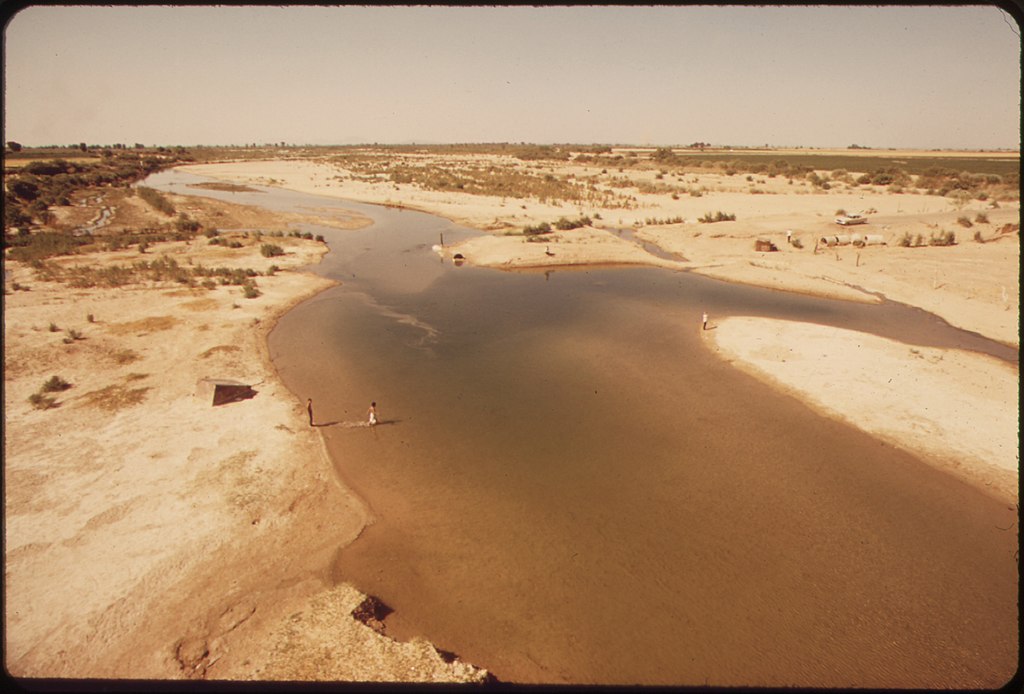The Colorado River’s low levels affect more than just the U.S.

Colorado River at the Mexico Border
Hailey Brown – Residents in Tijuana, Mexico have struggled with poor water systems for a long time. Running water doesn’t connect across the whole city, so instead, freshwater must be trucked in. In the face of drought, the burden of access continues to be placed on residents. The burden in the U.S. is a lot less. Thinking of the Colorado River as a network helps explain this disparity.
Networks are made up of a collection of linked nodes, each of which share a role in the overall purpose of the network. The Colorado River system connects a network of towns, regions, states, and countries along its 1,450 mile path. Drought has led to negotiations and cuts to access for all entities supplied by the river. Subsequently, Mexico’s allocation of water from the river has been cut by 7%. Though this has yet to affect water supplies, drought’s impact is already most visibly felt by residents of Tijuana, who are some of the last to be reached by the river — which provides 90% of their water. City water users experience shut offs when there is no available running water or maintenance is required. Residents who aren’t connected to city water rely on delivery via trucks, which is often more expensive than city rates. So, experts are concerned for the outlook of freshwater access going forward, as the effects of the 7% cut have yet to fully impact Tijuana. And while the city has looked to diversify their water sources, those efforts have had minimal payoff. Residents may instead be forced to continue to adapt their water consumption to meet availability.
Drought’s impacts are not limited to one area, especially when it impacts a river that supplies water for 40 million people. Scale helps to explain the geographic extent of political actions. In the case of the Colorado River, authorities decided to lower water shares for entities across the river’s region — one scale— to mitigate drought. Within Tijuana, residents then experience the impacts of this decision on the local, city, and statewide scale. In comparison, in Utah and other U.S. states, we are familiar with drought, but we have yet to really feel the impact. At the scale of the household, U.S. families use five times more water a month than families in Tijuana. Yet considering the scale of the city, Americans pay less.
Image source: National Archives at College Park, Public domain, via Wikimedia Commons

